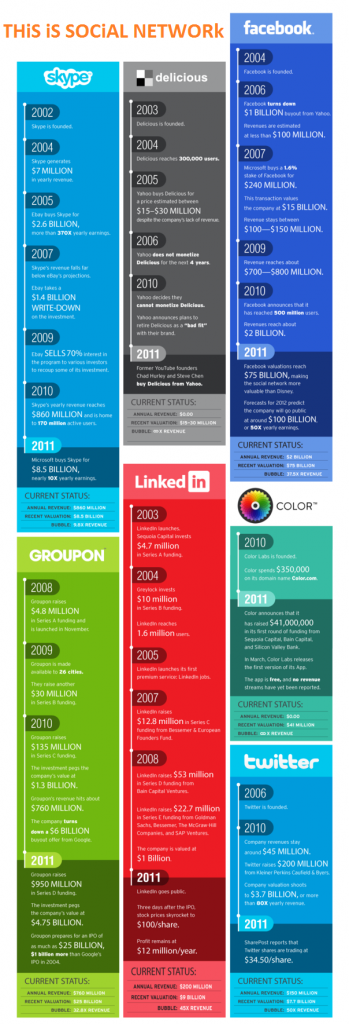So how many of you guys do that ?? 😀


There is been another war been start…
After the war b/w Hi5 and Orkut…
Orkut won…
Dan another start…
Orkut and Facebook…
Facebook won….
Then there was a war which was stil on between Facebook and Twitter…
But in this war Google+ jumped in…
But it seems that Google+ is targeting  Facebook mainly…
After that maybe will go for Twitter as well…
Lets see who win this war  this time…
Here is a  mimic of it… ;D
(dis is another artical i come across 2 read…i thought it would b goOd 2 share…)
There has long been a need for a real-time field-force monitoring system where people working in field can report their activities on the spot and management can view it, making sure that what has been reported has indeed been performed at the same location.
Let me explain you this way. Most of the companies have sales force hunting for prospective clients. By the day end, the sales staff needs to submit a report of their activities. If the activity report says that the person visited 35 prospects on a certain day who knows whether these prospects were actually visited. Even if we believe this, how can the management find out how much time was wasted in unofficial activities between one meeting and the other.
With the use of smart phones, installed with a Twitter app, this can very  easily be done because every tweet has time and most interestingly these apps can post tweet’s location.
easily be done because every tweet has time and most interestingly these apps can post tweet’s location.
So now, things will work like this. The manager has a Twitter account and his sales force as well.
John Doe, a sales representative visits Amalgamated Chemicals and meets their procurement department. All he needs to do is just tweet the meeting summary immediately after the meeting. This will record tweet’s physical location, as well as the time and the manager can see the activity in real time along with the location on the map where the tweet was made. The location will confirm that the visit was actually made. If the manager wants, he can even tweet back for any instructions.
The next prospective client is hardly a mile away from the first one but manager has no idea about this distance. Looking at the time difference between one meeting and the other and taking a look at the two physical locations on the map linked to the tweet, manager can even see if any time was wasted between the two meetings.
The use is just limited to one’s imagination. You can use it for sales force, maintenance team, courier service, surveys, delivery, logistics, mobile medical teams and more.
And yes, one thing very important. Do not use personal Twitter account here. Make another one for this purpose only otherwise you will end up spending more time in Tweeting than doing work.
Advice for small businesses on using social networking sites like Facebook and LinkedIn, and how to integrate these tools into the marketing and recruiting efforts of your company…
 Consider this: It wasn’t until 1997 that the Internet reached 50 million users in the United States. Facebook gained over 100 million users in the U.S. from January 2009 to January 2010, marking a 145 percent growth rate within one year, according to research by digital marketing agency iStrategy Labs. If you’re a business owner that hasn’t embraced social media networking as a major component of your success strategy, it’s due time to hop onboard.
Consider this: It wasn’t until 1997 that the Internet reached 50 million users in the United States. Facebook gained over 100 million users in the U.S. from January 2009 to January 2010, marking a 145 percent growth rate within one year, according to research by digital marketing agency iStrategy Labs. If you’re a business owner that hasn’t embraced social media networking as a major component of your success strategy, it’s due time to hop onboard.
“When you’ve got 300 million people on Facebook, that’s a huge business watering hole,†says Lon Safko, social media expert and co-author of The Social Media Bible: Tactics, Tools, and Strategies for Business Success, of the site’s global reach. “The profile is like an index to your company.â€
While Facebook has become the most popular social media site, there are plenty of others for your company to explore. LinkedIn, for example, houses 55 million professionals seeking jobs, employees, or basic business or networking opportunities. MySpace, which allows users to tinker with music, themes, and HTML code, is targeted toward youth and teens. All of these sites have one primary thing in common: the profile.
The user profile is generally what distinguishes social networking sites from other social media platforms. It helps set the stage for building relationships with people who share the same interests, activities, or personal contacts, as opposed to primarily disseminating or digesting information feeds. This also means social networks enable companies to invite audiences to get to know its brand in a way that traditional forms of marketing or advertising can’t.
But what, exactly, are the methods that businesses should use to effectively leverage the burgeoning userbase of these sites as a tool to grow their companies?
n now dis is wht i call SOCiAL NEtWORK… ; ]